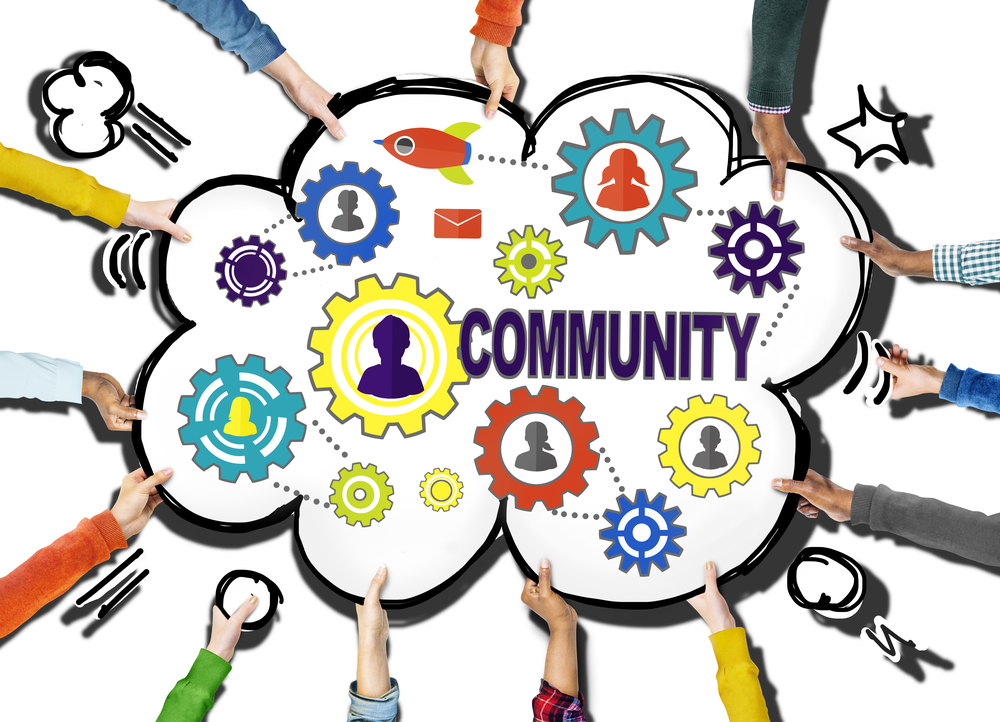Access: The TAC Blog
January 2018: We Need All of Us: Tips for Continuums of Care Working to Include People with Lived Experience of Homelessness

IT IS NOW WIDELY ACCEPTED that planning and implementing successful programs to prevent and end homelessness requires direct involvement by people who have themselves been homeless. Individuals with this lived experience, often referred to as “consumers” because of their direct interactions with homeless services, bring a well-informed awareness of the supports that are most needed and desired. Many valued innovations, such as the Housing First approach, are based on consumer preferences shared through interactions and studies.
Continuums of Care (CoCs) — collaborative planning bodies funded by the U.S. Department of Housing and Urban Development to improve homeless service coordination in specific geographic areas or communities — are required to include on their decision-making boards people who are or have been homeless, along with key stakeholders from nonprofit provider organizations, local government agencies, philanthropic organizations, and local businesses. Furthermore, any agency that receives funding through the CoC program must include a person who is homeless or formerly homeless on its own board or other policymaking entity.
However, many CoCs and agencies receiving CoC funds lack well-developed consumer involvement strategies. In response to a 2015 survey, 47 percent of CoCs said consumers influence some decisions, while only about 15 percent indicated that consumers influence all major decisions. Some CoC respondents reported that they want to involve consumers to a greater extent, but are challenged to find people who have enough “interest and stability” to be actively and consistently involved.
In 2016, the United States Interagency Council on Homelessness reported on a gathering of consumer advocates convened to discuss how decision-making bodies can create a welcoming environment for people with lived experience of homelessness. Based on these findings, together with insights from research on mental health consumer involvement, we’ve put together some tips to help you first build interest and excitement among homeless and formerly homeless people to become actively involved, and then to make sure this involvement is a positive experience for all.
Generate Interest
Clearly “advertise” what the role is and why it is important. For a CoC board, what is the time commitment? What does the board do? For a CoC-funded agency, what input is the agency seeking?
Develop and maintain strong connections to trusted community organizations that provide housing and services to people who are homeless. These partners can identify potential candidates and encourage participation.
Financially compensate board members with lived experience of homelessness for time and travel in a similar fashion to others serving in the same capacity.
Explain responsibilities, reimbursement policies, the time commitment expected, and options for participating in different ways, such as attending meetings or reviewing draft materials. It may be helpful to use the term “like a job” to clarify the level of expectation.
Establish Stability
Language matters! Use “people first” language in all your materials and communications, such as “people who are experiencing homelessness” rather than “the homeless.” Consider your language choices when talking about subpopulations as well, for instance saying “young adults” rather than “kids” when talking about young people experiencing homelessness.
Identify and resolve any barriers to participation, like scheduling conflicts with employment, lack of access to transportation, or the need for child care. Devote part of each meeting to addressing these barriers, and meet with people individually as needed to problem-solve. Consider non-traditional meeting times to accommodate these needs, such as in the evenings or on the weekends. Meet in locations that are accessible by public transportation, and offer child care or child-friendly meeting spaces.
Designate a point person for questions and concerns. This person should check in regularly with the consumer to make sure they understand the board or committee’s processes (meeting agendas, voting procedures) and the content to be discussed during each meeting. It’s also important to bring people up to date on what happened at any meetings they missed. Offer opportunities to provide input in ways besides speaking publicly at a meeting, such as in writing or via email before or after meetings. Individualized connections like this may be especially important when working with board/committee members who have a serious mental illness.
Make every effort to accommodate consumers’ needs, particularly in relation to health difficulties. For people with disabilities, accommodations should include a physically accessible room, materials in appropriate formats (e.g., large print, Braille), and access to Communication Access Realtime Translator (CART) and American Sign Language (ASL) interpreters. The meeting’s facilitator may need to be deliberate in making the space for members with disabilities to be heard – especially those with mental health conditions. As noted earlier, making meetings child-friendly or offering child care can enable participation by people with young children.
Eliminate tokenism by recruiting more than one person with lived experience, and offer other opportunities for inclusion as well. Invite people to suggest ways in which they would like to contribute, and work to create an environment that actively engages and solicits the input of all members of the group, including those with differing communication capacities.
Learn Together
Value consumers and their perspectives regardless of what led to their experience of homelessness.
Include a cross-training component, in which each advisory board member takes five to ten minutes to explain to the group the expertise they have to offer, which for some members will include their lived experience of homelessness. Ensure that this time does not turn into a “job interview” format where members are merely listing qualifications.
Create opportunities for informal interactions between consumers and other committee members, such as sponsoring and paying for group lunches and social outings.
Consider ways to bring people with lived experience of homelessness into leadership roles within your CoC, through the board and committee membership, or by spearheading specific CoC initiatives. Establish a clear process for those who may be interested and invest time in actively recruiting members.
Make sure everyone is up to speed before shifting gears or making decisions. This includes educating consumer members on the basics of the CoC, and defining common terms and acronyms. Try to use plain, non-specialized language in meetings. Consider making decisions by consensus through group discussion, rather than by majority vote.
It can be challenging for any group to work together across significant differences in background and experience. But it’s worth it! To make their programs as effective as possible, CoCs need the insights and ideas of people with current or recent experiences of homelessness. In turn, the organizational leaders and policymakers who serve on a CoC or agency board offer connections, knowledge, and authority — valuable resources to which consumers on their own often lack access. Continuums of Care that rise to the challenge of fully incorporating people with lived experience of homelessness will be all the stronger for it.
Helpful Resources:
A Quick Guide on Consumer Engagement in Governance of Health Care for the Homeless Projects (2016, National Health Care for the Homeless Council).
Guidance for Consumer Advisory Board Staff Support [on Homlessness Projects] (2017, National Health Care for the Homeless Council).
Nothing About Us Without Us: Seven Principles for Leadership and Inclusion of People with Lived Experience of Homelessness (2016, Lived Experience Advisory Council of the Canadian Obervatory on Homelessness).
Recommendations for Effective Implementation of the HEARTH Act Continuum of Care Regulations (2012, National Alliance to End Homelessness)
Youth Collaboration Toolkit (2017, True Colors Fund)
Thanks to TAC Associate Lauren Knott for her assistance with this post!





